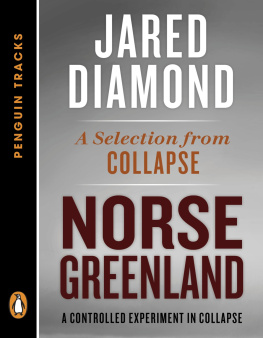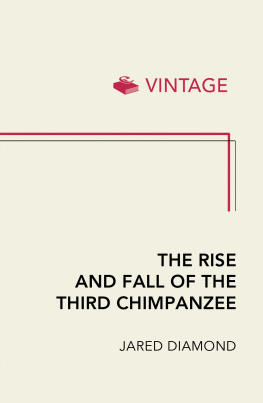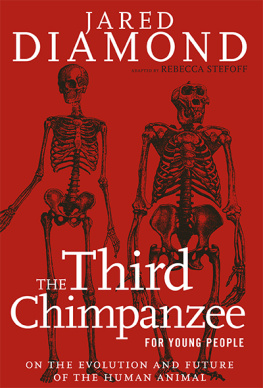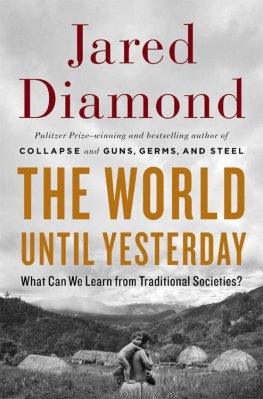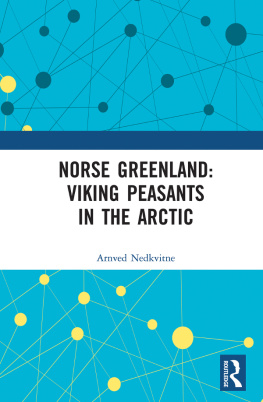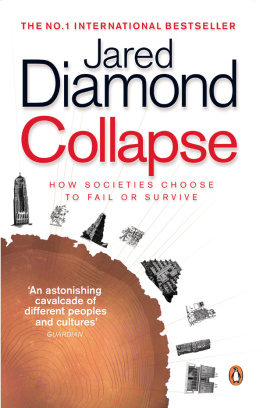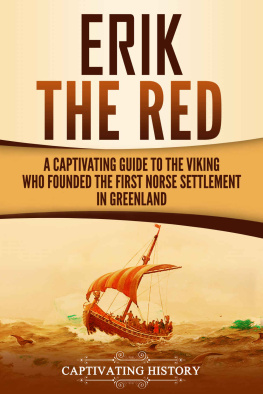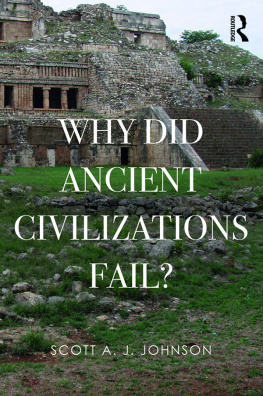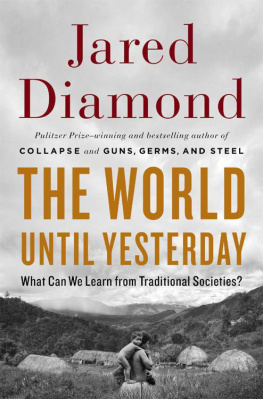CONTENTS
NORSE GREENLAND:
A Controlled Experiment in Collapse
EXTRA!
PENGUIN TRACKS
NORSE GREENLAND
A Controlled Experiment in Collapse
JARED DIAMOND is a professor of geography at UCLA and a winner of the Pulitzer Prize. His previous books include Why Is Sex Fun?, The Third Chimpanzee, and Guns, Germs, and Steel. His latest book, The World Until Yesterday, is available from Viking.

ALSO BY
Jared Diamond
THE WORLD UNTIL YESTERDAY:
What Can We Learn from Traditional Societies?
COLLAPSE:
How Societies Choose to Fail or Succeed
GUNS, GERMS, AND STEEL:
The Fates of Human Societies
WHY IS SEX FUN?
The Evolution Of Human Sexuality
THE THIRD CHIMPANZEE
The Evolution and Future of the Human Animal
JARED
DIAMOND
A SELECTION FROM
Collapse
NORSE
GREENLAND
A Controlled Experiment in Collapse
PENGUIN TRACKS

ABOUT THE BOOK
This excerpt from Pulitzer Prizewinning author Jared Diamonds Collapse takes a timely and fascinating look at prehistoric Norse Greenlandthe closest approximation of a controlled experiment in collapse in history. One island, two unique societies (Norse and Inuit). Only one of these societies would succeedthe other would fail. But how? With his trademark accessibility and comprehensiveness, Diamond documents how environmental damage, climate change, loss of friendly contacts and the rise of hostile ones, and the unique political, economic, and social settings of prehistoric Greenland combine to demonstrate exactly why and how societies choose to fail or succeed.
PENGUIN BOOKS
Published by the Penguin Group
Penguin Group (USA) Inc., 375 Hudson Street, New York, New York 10014, USA
Penguin Group (Canada), 90 Eglinton Avenue East, Suite 700, Toronto, Ontario M4P 2Y3, Canada (a division of Pearson Penguin Canada Inc.)
Penguin Books Ltd, 80 Strand, London WC2R 0RL, England
Penguin Ireland, 25 St Stephens Green, Dublin 2, Ireland (a division of Penguin Books Ltd)
Penguin Group (Australia), 707 Collins Street, Melbourne, Victoria 3008, Australia (a division of Pearson Australia Group Pty Ltd)
Penguin Books India Pvt Ltd, 11 Community Centre, Panchsheel Park, New Delhi 110 017, India
Penguin Group (NZ), 67 Apollo Drive, Rosedale, Auckland 0632, New Zealand (a division of Pearson New Zealand Ltd)
Penguin Books (South Africa), Rosebank Office Park, 181 Jan Smuts Avenue, Parktown North 2193, South Africa
Penguin China, B7 Jiaming Center, 27 East Third Ring Road North, Chaoyang District, Beijing 100020, China
Penguin Books Ltd, Registered Offices:
80 Strand, London WC2R 0RL, England
Copyright Jared Diamond, 2005, 2011
All rights reserved
The contents of this book first appeared in Jared Diamonds Collapse: How Societies Choose to Fail or Succeed (Viking Penguin, 2005; Penguin Books, 2006, 2011)
Map by Jeffrey L. Ward
ISBN 978-1-101-62935-2 (ePub)
No part of this product may be reproduced, scanned, or distributed in any printed or electronic form without permission. Please do not participate in or encourage piracy of copyrighted materials in violation of the authors rights. Purchase only authorized editions.
THE VIKING PRELUDE AND FUGUES
Experiments in the Atlantic The Viking explosion Autocatalysis Viking agriculture Iron Viking chiefs Viking religion Orkneys, Shetlands, Faeroes Icelands environment Icelands history Iceland in context Vinland
When moviegoers of my generation hear the word Vikings, we picture chieftain Kirk Douglas, star of the unforgettable 1958 epic film The Vikings, clad in his nail-studded leather shirt as he leads his bearded barbarians on voyages of raiding, raping, and killing. Nearly half a century after watching that film on a date with a college girlfriend, I can still replay in my imagination the opening scene in which Viking warriors batter down a castle gate while its unsuspecting occupants carouse inside, the occupants scream as the Vikings burst in and slaughter them, and Kirk Douglas begs his beautiful captive Janet Leigh to heighten his pleasure by vainly attempting to resist him. There is much truth to those gory images: the Vikings did indeed terrorize medieval Europe for several centuries. In their own language (Old Norse), even the word vikingar meant raiders.
But other parts of the Viking story are equally romantic and more relevant to this book. Besides being feared pirates, the Vikings were farmers, traders, colonizers, and the first European explorers of the North Atlantic. The settlements that they founded met very different fates. Viking settlers of Continental Europe and the British Isles eventually merged with local populations and played a role in forming several nation-states, notably Russia, England, and France. The Vinland colony, representing Europeans first attempt to settle North America, was quickly abandoned; the Greenland colony, for 450 years the most remote outpost of European society, finally vanished; the Iceland colony struggled for many centuries through poverty and political difficulties, to emerge in recent times as one of the worlds most affluent societies; and the Orkney, Shetland, and Faeroe colonies survived with little difficulty. All of those Viking colonies were derived from the same ancestral society: their differing fates were transparently related to the different environments in which the colonists found themselves.
Thus, the Viking expansion westwards across the North Atlantic offers us an instructive natural experiment, just as does the Polynesian expansion eastwards across the Pacific (see the in this chapter). Nested within this large natural experiment, Greenland offers us a smaller one: the Vikings met another people there, the Inuit, whose solutions to Greenlands environmental problems were very different from those of the Vikings. When that smaller experiment ended five centuries later, Greenlands Vikings had all perished, leaving Greenland uncontested in the hands of the Inuit. The tragedy of the Greenland Norse (Greenland Scandinavians) thus carries a hopeful message: even in difficult environments, collapses of human societies are not inevitable: it depends on how people respond.
The environmentally triggered collapse of Viking Greenland and the struggles of Iceland have parallels with the environmentally triggered collapses of Easter Island, Mangareva, the Anasazi, the Maya, and many other pre-industrial societies. However, we enjoy advantages in understanding Greenlands collapse and Icelands troubles. For Greenlands and especially Icelands history, we possess contemporary written accounts from those societies as well as from their trade partnersaccounts that are frustratingly fragmentary, but still much better than our complete lack of written eyewitness records for those other pre-industrial societies. The Anasazi died or scattered, and the society of the few surviving Easter Islanders became transformed by outsiders, but most modern Icelanders are still the direct descendants of the Viking men and their Celtic wives who were Icelands first settlers. In particular, medieval European Christian societies, such as those of Iceland and Norse Greenland, that evolved directly into modern European Christian societies. Hence we know what the church ruins, preserved art, and archaeologically excavated tools meant, whereas much guesswork is required to interpret archaeological remains of those other societies. For instance, when I stood within an opening in the west wall of the well-preserved stone building erected around A.D. 1300 at Hvalsey in Greenland, I knew by comparison with Christian churches elsewhere that this building too was a Christian church, that this particular one was an almost exact replica of a church at Eidfjord in Norway, and that the opening in the west wall was the main entrance as in other Christian churches. In contrast, we cant hope to understand the significance of Easter Islands stone statues in such detail.

